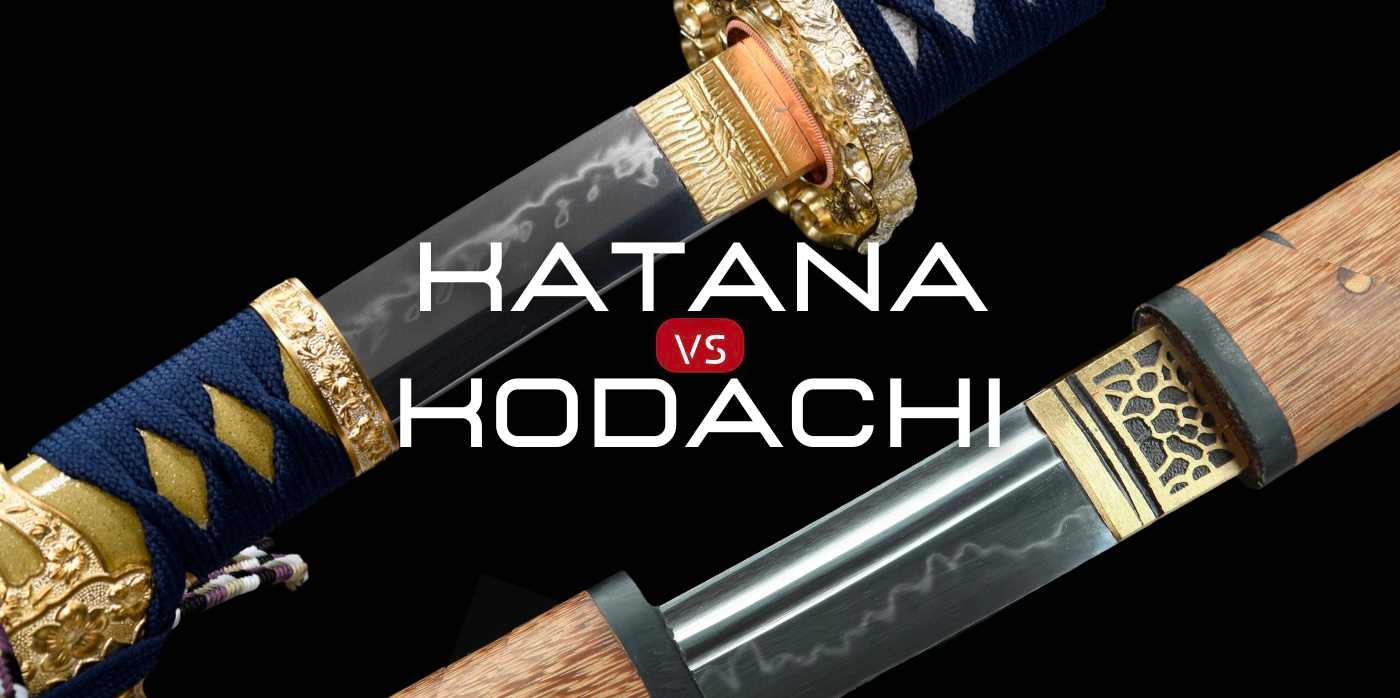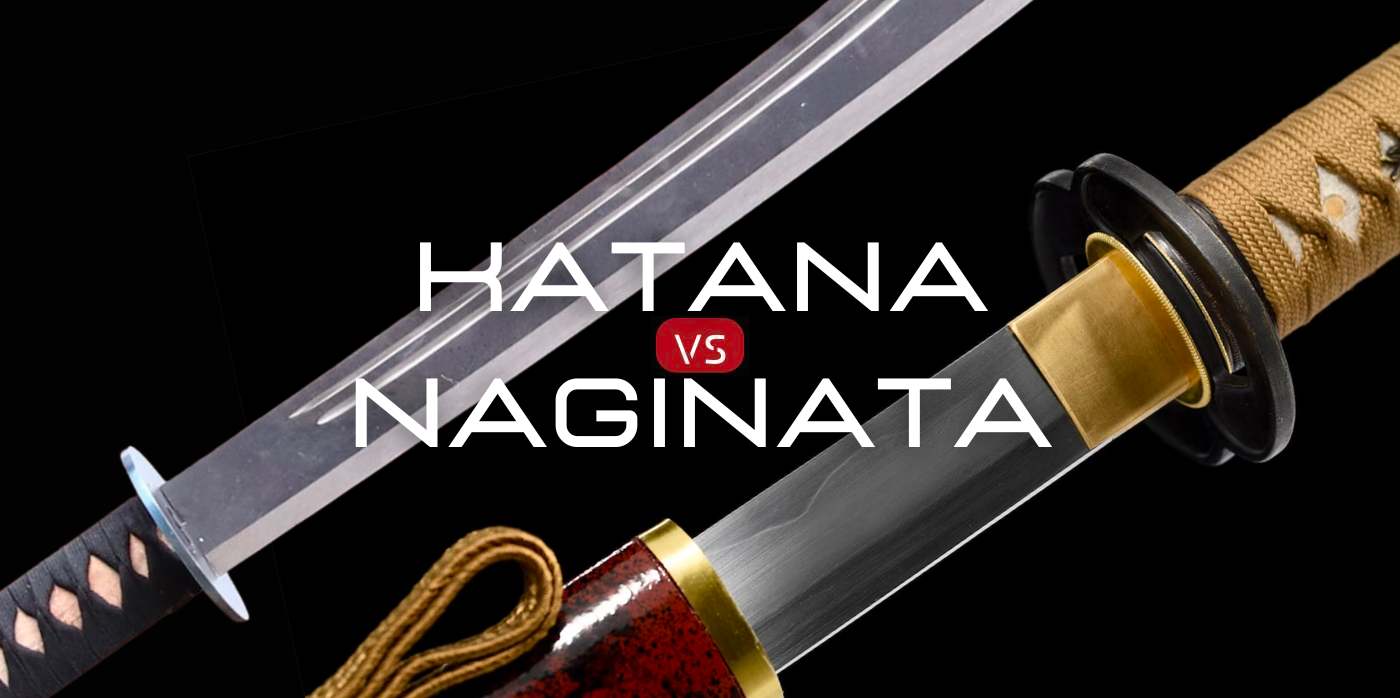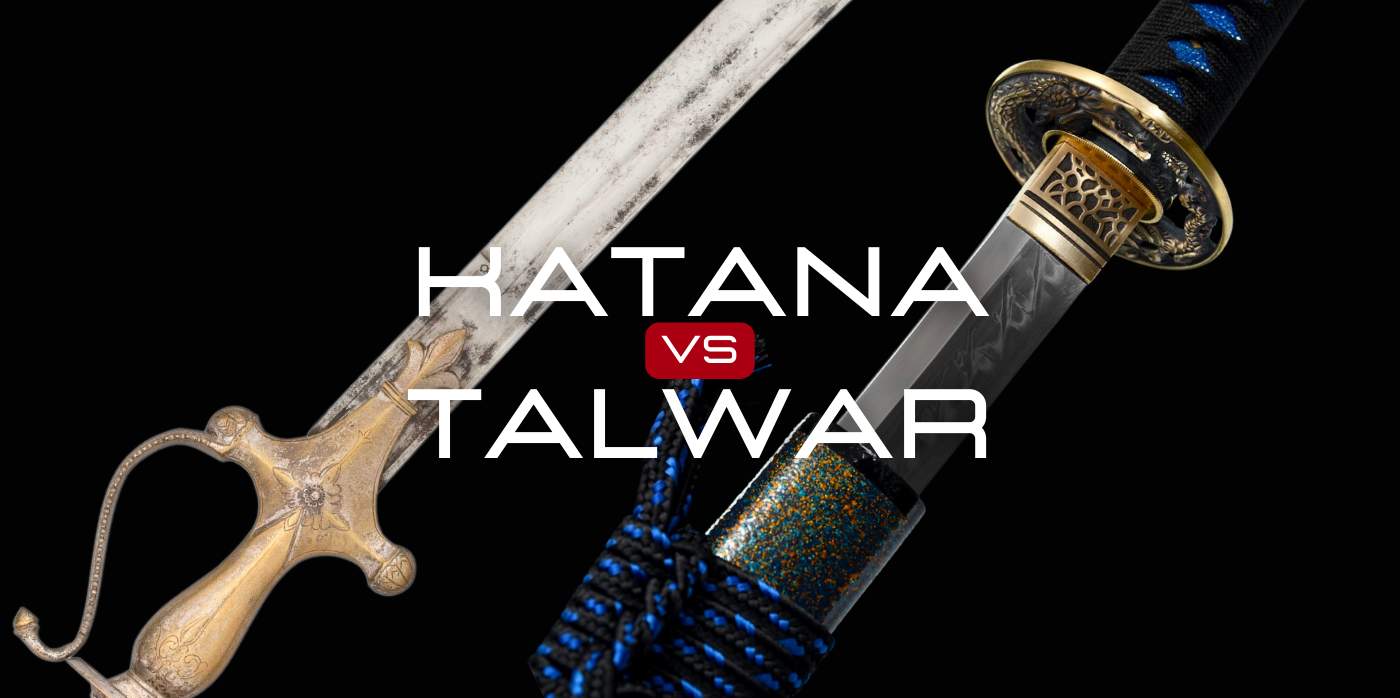The main distinction between a Katana and an Odachi comes down to blade length. Typically, a Katana has a blade length of 24 to 30 inches, featuring a single edge with a subtle curve. In contrast, an Odachi is an extended variant of the traditional Japanese sword, often having a blade that stretches beyond 36 inches. Both swords share similar construction techniques and stylistic elements, but their lengths make them suited for different types of combat scenarios.
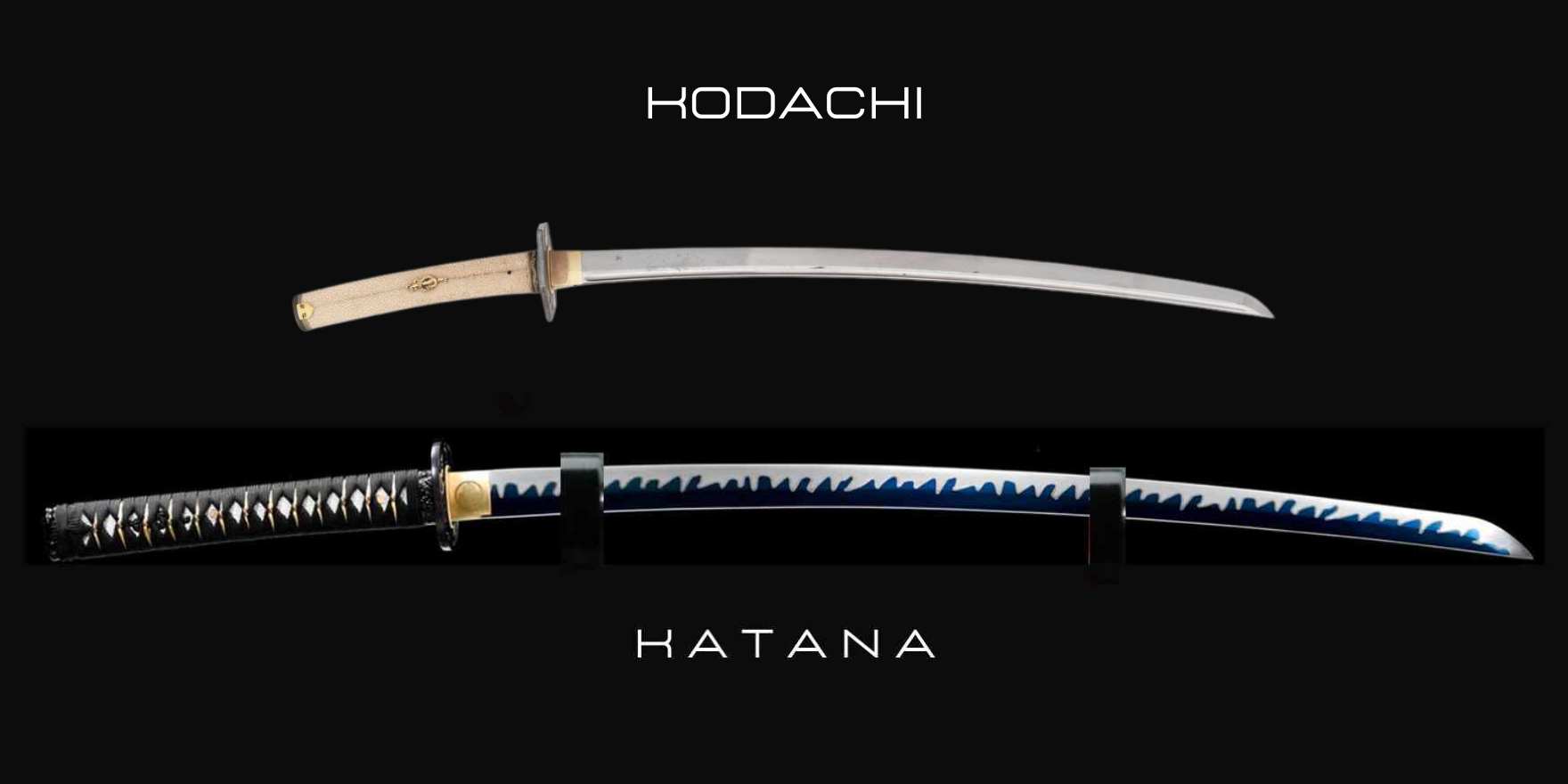
What is a Kodachi
The Kodachi (小太刀) is a short traditional Japanese sword, ranging in length from 12 to 24 inches, often used as a versatile sidearm. It's historically significant in feudal Japan and found its role in Kenjutsu, the traditional Japanese martial art of swordsmanship. Unlike the longer, more curved Katana, the Kodachi is designed for quick, agile fighting and is ideal for confined spaces.
The Kodachi was versatile, suitable for both slashing and thrusting moves, which made it a valuable asset in diverse fighting situations. This included its use as a supplementary weapon or for swift strikes while mounted on horseback. As time passed, the Kodachi was incorporated into multiple Kenjutsu training programs, either as an independent subject or within a more comprehensive course of study.
What is a katana
The Katana, (刀) a longsword hailing from traditional Japanese culture, usually features a blade length of between 24 to 30 inches. It stands as one of the most emblematic and renowned weapons of feudal Japan, closely tied to the Samurai warrior class.
Historically, the Katana served as the principal weapon for Samurai warriors and was commonly coupled with a shorter blade like the Wakizashi to form a daisho set. Beyond its function as a weapon, the Katana also embodies the Samurai's honor and is often viewed as a culturally and spiritually significant piece of art. The Katana is featured prominently in various schools of Kenjutsu, where practitioners learn the nuanced techniques required to wield this weapon effectively.
Unlike the Kodachi, which is more suited for confined spaces and quicker movements, the Katana is designed for open combat, providing a longer reach and more powerful strikes. It is less suited for confined spaces due to its length but excels in one-on-one combat and has been effectively used in various fighting styles, from ground combat to horseback.
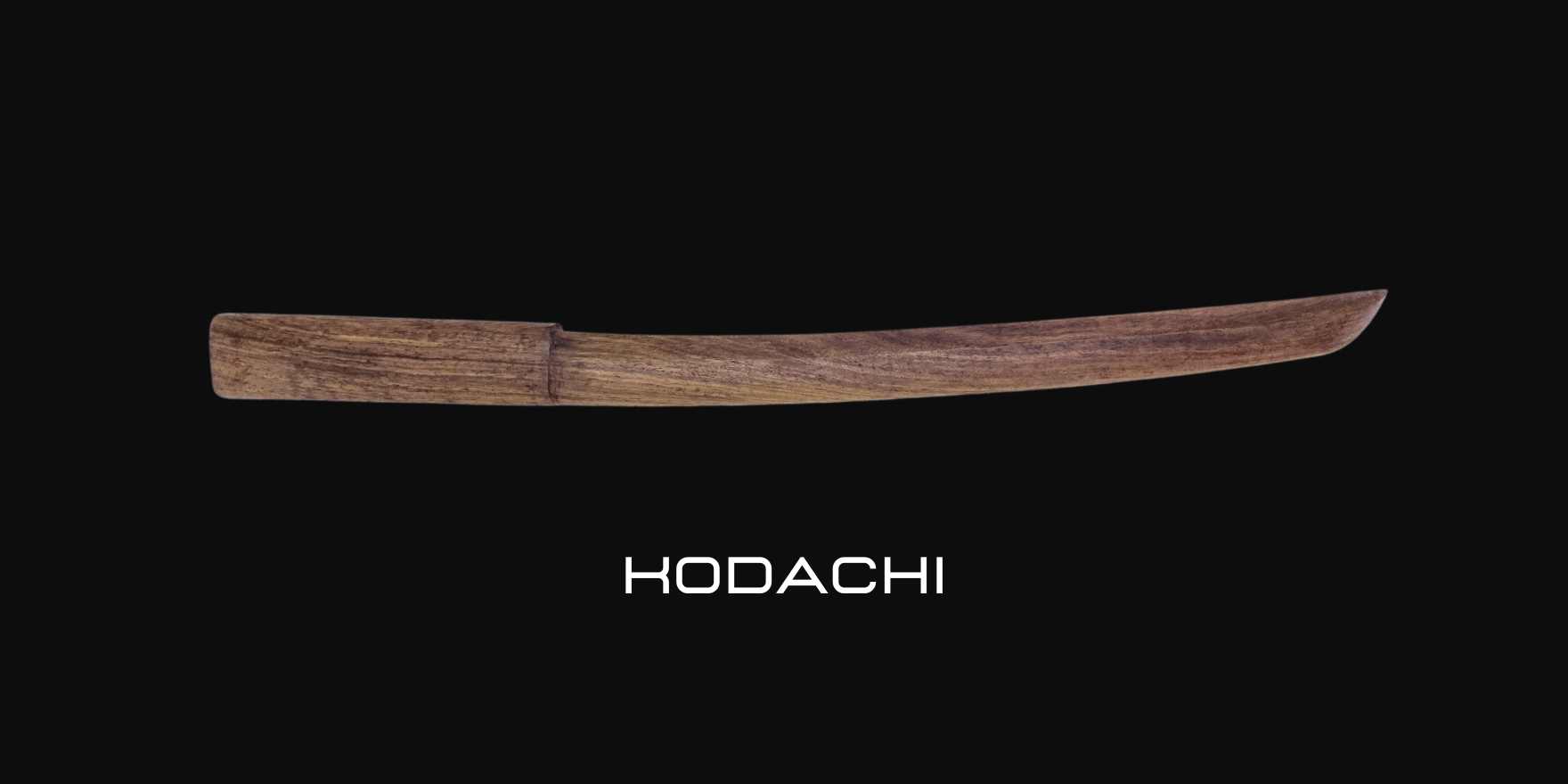
Kodachi Vs Katana Differences
The Kodachi and Katana hold significant places in Japanese martial arts and history, yet they cater to different combat scenarios and styles. Both originating from feudal Japan and commonly seen in the hands of samurai, these swords differ in blade design, practical application, and the specific martial arts disciplines that teach their use. Let's delve into the key distinctions between the Kodachi and Katana:
Blade Length
Perhaps the most immediate difference is the blade length. The Katana's blade usually measures between 60 to 80 centimeters (approximately 23.6 to 31.5 inches), making it the longer of the two. The Kodachi, on the other hand, features a shorter blade, typically measuring under 60 centimeters. This shorter stature makes the Kodachi particularly well-suited for rapid, close-range engagements, while the lengthier Katana is optimized for more expansive combat arenas and duels.
Design and Curve
While both the Katana and the Kodachi are curved swords, the curvature of a Katana is generally more pronounced. This curve allows the Katana to be particularly effective for slicing and slashing motions. On the other hand, the Kodachi, with its lesser curve and shorter length, is more geared towards quick thrusts and parries.
Weight and Balance
Given its longer blade and often more elaborate construction, a Katana will generally be heavier than a Kodachi. However, the Katana is meticulously balanced to ensure that it can be wielded effectively for its intended use-cases. The Kodachi is lighter, making it easier to maneuver quickly, particularly in confined spaces.
Martial Arts Techniques
Different schools of Kenjutsu (the martial art of Japanese swordsmanship) often have specific techniques tailored for the Katana and the Kodachi. The longer Katana is used for broad, sweeping strokes and requires a particular set of stances and grips. In contrast, the Kodachi is wielded with quicker, more abrupt movements and has techniques focusing on speed and evasion.
Historical Context and Usage
The Katana is often seen as the quintessential weapon of the samurai, symbolizing honor and the warrior code of Bushido. It was the primary weapon used in duels and battles. The Kodachi, while also used by samurai, was generally considered a secondary weapon, ideal for situations where a longer blade would be impractical.
Versatility
While the Katana is incredibly versatile in its own right, capable of both slashing and thrusting efficiently, its design leans more towards open combat scenarios. The Kodachi, being smaller and easier to handle, is often considered more versatile in confined spaces or as a supplementary weapon.
Social Context
In feudal Japan, carrying a Katana was often a privilege reserved for the samurai class, and it was a part of their daisho, a paired set that included a longer and a shorter sword (usually a Wakizashi). The Kodachi did not have the same social restrictions and was sometimes used by other classes, including merchants and commoners, for self-defense.
In summary, while both the Katana and the Kodachi have their roots in Japanese history and culture, they are designed for different combat scenarios and techniques. The Katana is longer, heavier, and often more elaborately designed, intended for open-field combat and dueling. The Kodachi is shorter, lighter, and more versatile, designed for close-quarter combat and quicker, more agile fighting styles.



